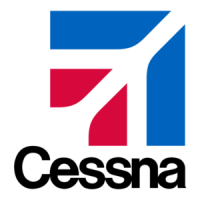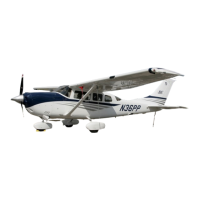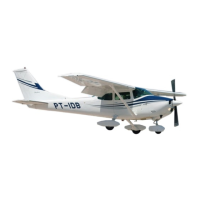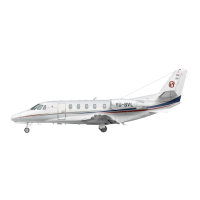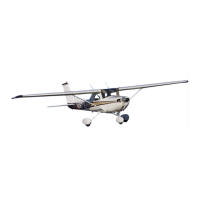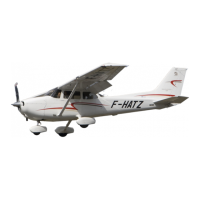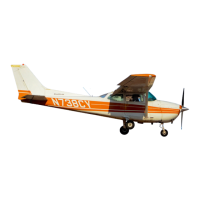CESSNA
MODELTR182
SECTION 4
NORMALPROCEDURES
AMPLIFIED PROCEDURES
STARTING ENGINE
Proper fuel management and throttle adjustments are the determining
factors in securing an easy start from your turbocharged, carbureted
engine. The procedure outlined in this section should be followed closely
as
it
is effective under nearly all operating conditions.
Conventional full rich mixture and high RPM propeller settings are
used for starting; however, the throttle should be fully closed. Whenready
to start, place the ignition switch in the start position. In warm weather, if
the engine does not start after 5seconds ofcranking, crack the throttle 1/8
inch open and crank again. When the engine starts, slowly adjust the
throttle to the desired idle speed.
NOTE
The carburetor used on this airplane does not have an
accelerator pump; therefore, pumping ofthe throttle must
be avoided during starting because doing so will only
cause excessive leaning.
In cold weather, 2 strokes of the primer may be necessary prior to
starting. During extremely coldtemperatures, up to 4strokes ofthe primer
may be necessary.
NOTE
Additional details concerning cold weather starting and
operation may be found under COLDWEATHEROPERA-
TIoN paragraphs in this section.
TAXIING
When taxiing,
it
is important that speed and use of brakes be held to a
minimum and that all controls be utilized (see Taxiing Diagram, figure 4-
2) to maintain directional control and balance.
The carburetor heat control knob should be pushed full in during all
ground operations unless heat is absolutely necessary for smooth engine
operation. Whenthe knob is pulled out to the heat position, air entering the
engine is not filtered.
1 October 1978
4-13
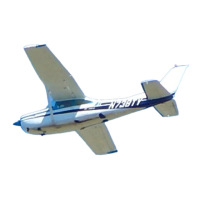
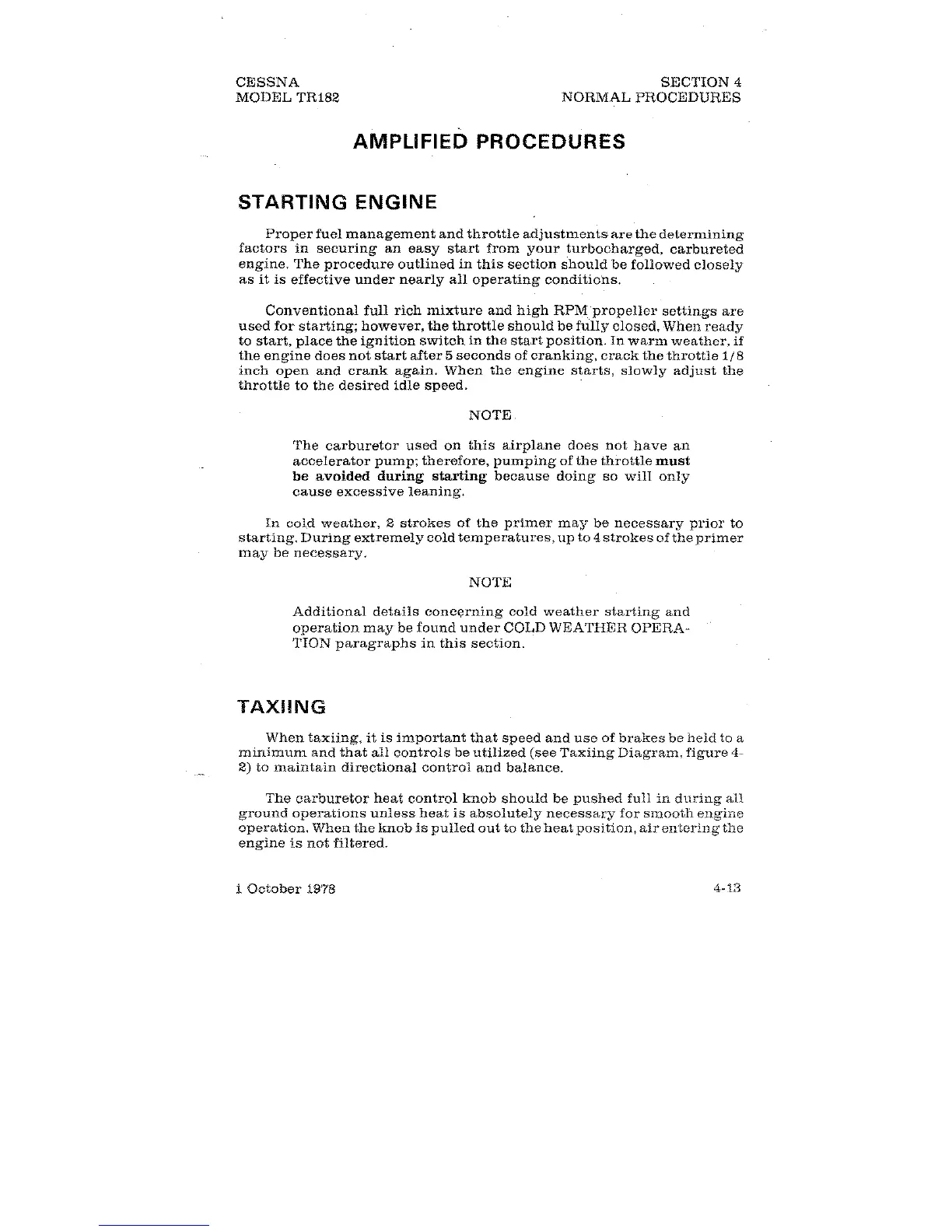